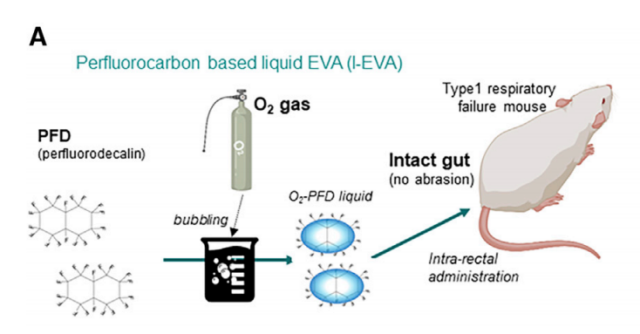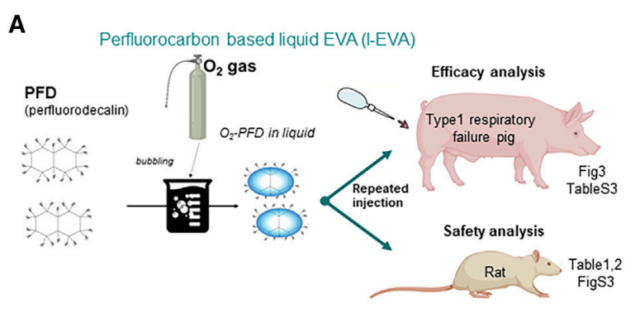Cell Journal: Mammals can breathe through the anus
- Normal Liver Cells Found to Promote Cancer Metastasis to the Liver
- Nearly 80% Complete Remission: Breakthrough in ADC Anti-Tumor Treatment
- Vaccination Against Common Diseases May Prevent Dementia!
- New Alzheimer’s Disease (AD) Diagnosis and Staging Criteria
- Breakthrough in Alzheimer’s Disease: New Nasal Spray Halts Cognitive Decline by Targeting Toxic Protein
- Can the Tap Water at the Paris Olympics be Drunk Directly?
Cell Journal: Mammals can breathe through the anus
Cell Journal: Mammals can breathe through the anus. Subvert cognition, the anus can breathe!
The study reported an interesting phenomenon that mammals such as pigs and mice can use their intestines to breathe.
The researchers delivered oxygen or oxygenated fluids through the anus, effectively reversing the symptoms of respiratory failure in mice and pigs.
Oxygen is an indispensable substance in human life activities, and breathing is the foundation of life. People can not eat for a few days, but if they don’t breathe, they will die in just a few minutes. The existence of life must be constantly metabolized, and humans need oxygen for aerobic metabolism in order to obtain energy. Any problem with aerobic metabolism in any part can cause disease.
On May 14, 2021, the research team of Tokyo Medical and Dental University in Japan published a research paper entitled “Mammalian enteral ventilation ameliorates respiratory failure” in the journal “Med”, a sub-Journal of Cell.
The study reported an interesting phenomenon that mammals such as pigs and mice can use their intestines to breathe. The researchers delivered oxygen or oxygenated fluids through the anus, effectively reversing the symptoms of respiratory failure in mice and pigs.
At present, the pandemic of the COVID-19 has exceeded the clinical demand for ventilators and artificial lungs, resulting in a severe shortage of available equipment. This discovery undoubtedly brings good news to mankind and is expected to help provide new treatment methods for patients with severe respiratory problems.
Researchers used experimental models of respiratory failure in mice and pigs to try to deliver oxygen in the form of gas or oxygen-rich liquid into the rectum of animals.

First, the researchers injected pure oxygen into the rectum of mice through an oxygen ventilation system. Researchers found that if there is no intestinal ventilation system, the average survival period of mice is 11 minutes. After passing through the intestinal ventilation, more oxygen reaches the heart, and the average survival time of the mice is 18 minutes. In sharp contrast, 75% of mice that received intestinal ventilation and impaired intestinal mucosal barrier survived for 50 minutes.
This is a surprising result showing that the most effective delivery of oxygen to the intestinal cavity requires abrasion of the intestinal mucosal barrier. However, intestinal injury is unlikely to be applicable to human patients, and it is not clinically feasible, especially for severely ill patients. So researchers began to look for alternative methods.
Researchers have developed a class of biocompatible oxygen-containing liquid substitutes, liquid perfluorinated chemicals, which are chemical substances in which hydrogen atoms are replaced by fluorine.
Subsequently, the researchers used oxygen-enriched perfluorocarbon to treat mice and pigs, and placed the mice in a hypoxic chamber for experiments. The results showed that mice treated with perfluorocarbon ventilation were able to walk longer than untreated mice, and more oxygen reached their hearts.
The results show that the intestinal fluid ventilation system provides a good therapeutic effect for rodents exposed to non-lethal hypoxic conditions.

Amazingly, similar results were confirmed in pigs, and no serious complications were found in the liver, spleen and intestines.
The above research results show that in the two mammalian model systems, this strategy is effective in providing oxygen to the circulation and alleviating the symptoms of respiratory failure.
The author stated that artificial respiration support plays a vital role in the clinical management of respiratory failure caused by severe diseases such as pneumonia or acute respiratory distress syndrome. The arterial oxygenation level provided by the ventilation system in this study, if applicable to humans, is likely to be sufficient to treat patients with severe respiratory failure and may provide life-saving oxygen.
(source:internet, reference only)
Disclaimer of medicaltrend.org
Important Note: The information provided is for informational purposes only and should not be considered as medical advice.



